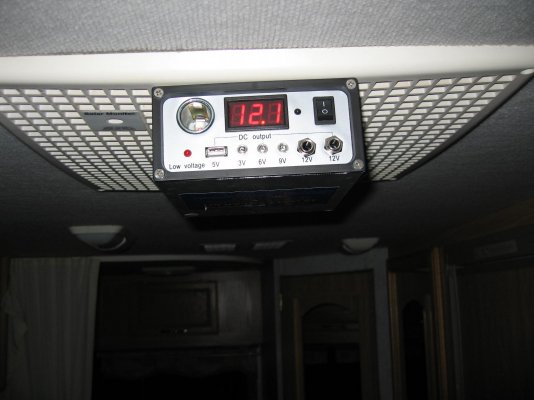RV Roamer said:
I've even screwed a boat rack to the plywood (only) and never lost anything, but it is always possible you will run into extreme winds. By all means find a cross member if you can, but I wouldn't lose sleep if I could not find one where I needed it. I've got a large solar panel and a satellite dome up there and I doubt if their bracket pattern conforms to my roof's structural members except by good luck.
Well, I tried doing it without a stud finder (I think I have one somewhere here, but couldn't find it and will buy one for sure tomorrow) and the plywood under my EPDM must be tissue paper thin. I cannot even tell when the screws are tightened down as there's almost no resistance at all when fully down (1.5" wood screws, a little thicker than you suggested so it fits my bracket holes better without a big washer). I did complete one solar panel, but I think I will have to remove it if the Dicor sealant isn't helping to hold it down. Or does that Dicor sealent help hold the brackets when it dries? If it doesn't, I will have to remove the panel and seal up the 16 holes (four holes for the screws in each panel bracket) in the roof.
BTW, I think this forum could use some library info on solar panel installations. Another interesting thing I discovered was that the stock 5 watt solar panel has the EXACT same type of connector as my new panels, new panels will plug right in, but then
IN REVERSE POLARITY..
Anyway, Harbor Fright Tools has a three solar panel kit (15 watts each for a total of 45 watts) on sale this week for $179.00. Includes the controller, cables lights and stuff. Not really designed for RV's, but it will work for such. I purchased the set today. They normally ask $250.00 for this set.
Along with one panel I installed today, and the 5 watt stock one, I will have 65 watts total possible of solar when completed.
The solar controller looks cool. But I had to remove the feet and upside down the face plate and install it like this (see photo below). It has USB power outputs and 3, 6, 9 and several 12 VDC outputs built in. This solar controller install works for those under 6 feet and 6 inches or so tall in my RV. The bottom of the A/C unit was an ideal place to mount the solar controller in my RV because that's where all the wiring meets and that is where I reversed the popularity so I didn't have to reverse all the new solar panel connectors. Now, I only have to reverse the stock 5 watt panel's polarity if I don't remove it and use it for something else, like to help charge the engine's battery.
Anyway, if I cannot find places that are better to mount my panels, do you have any suggestions? And the one I have up there now, do you think I should remove it because of the problem with the screws no holding, or what? I was planning on waiting a few days and seeing if I can remove a bracket using just a little force straight up. If the sealant doesn't help hold it more than the screws, I will be forced to remove it until there's a better idea.
BTW, there's a satellite dish up there that looks like it's holding, but whoever installed that must have known what he was doing, unlike me

. I can only see the sealant on those dish brackets, so I don't know what is really holding them down but my solar brackets look like that too now, perhaps even the same sealant used. Looks the same, anyway. But I don't feel that my screws are holding much of anything and that makes me nervous. Any ideas?
-Don- Reno, NV

